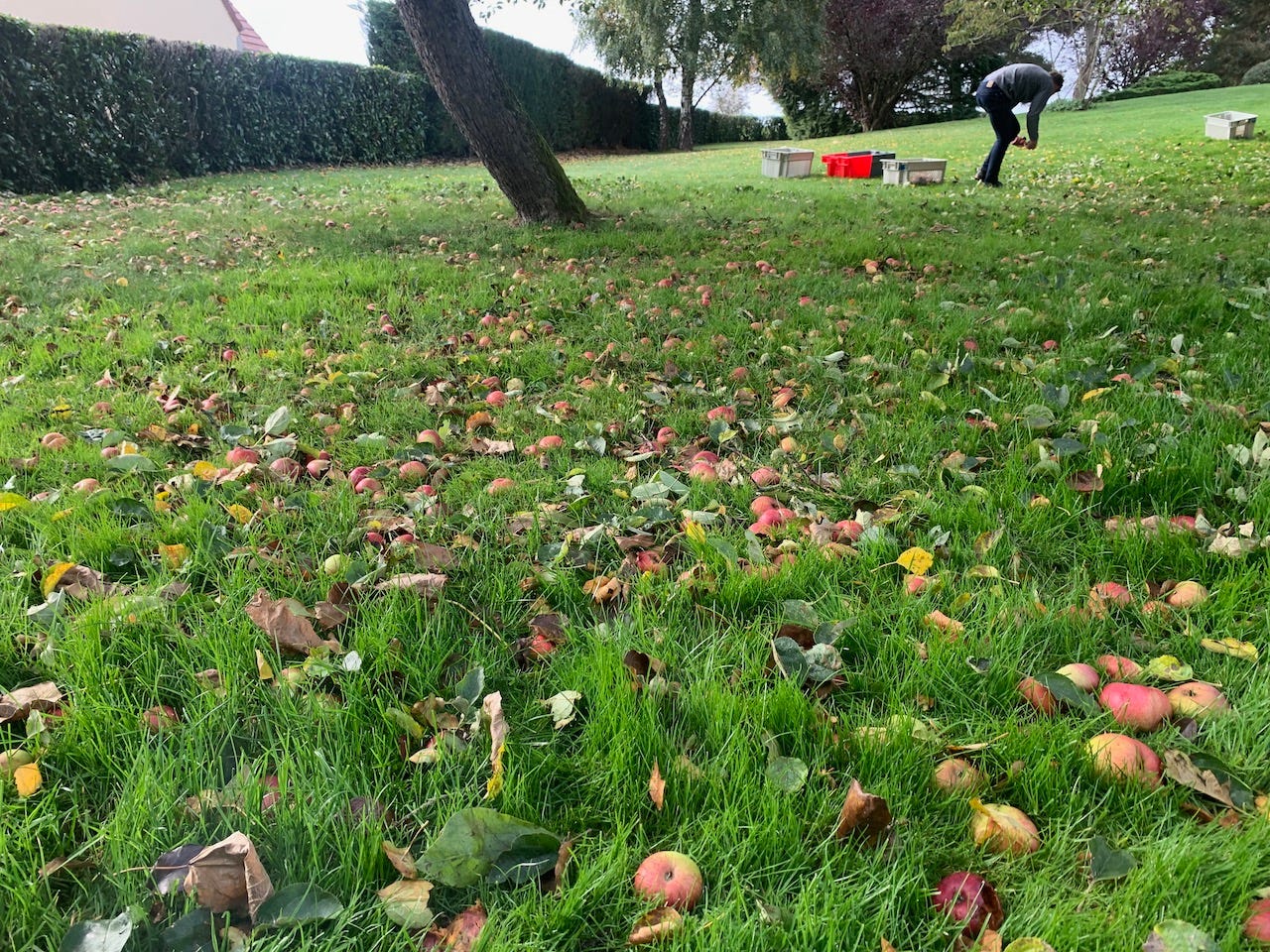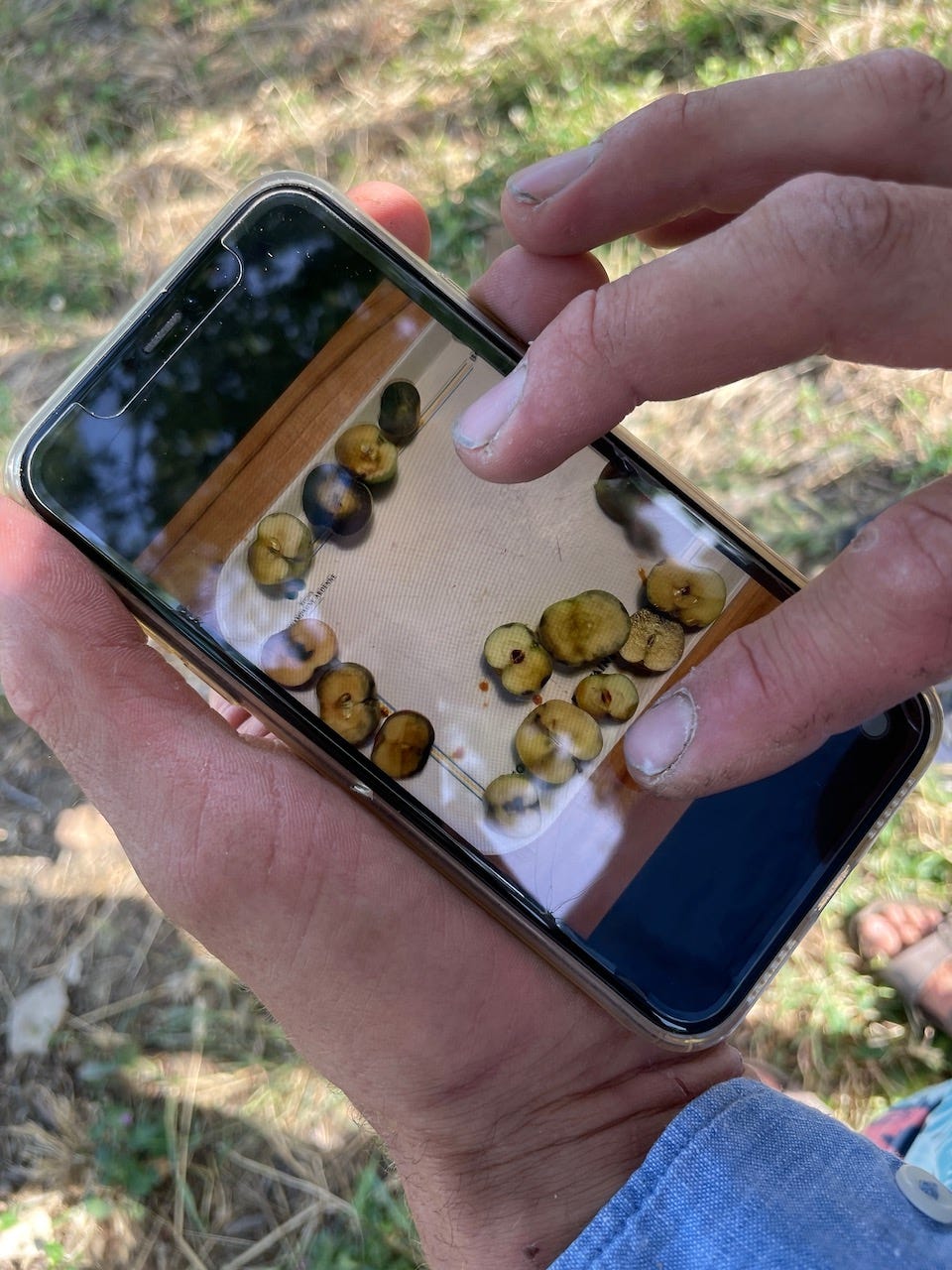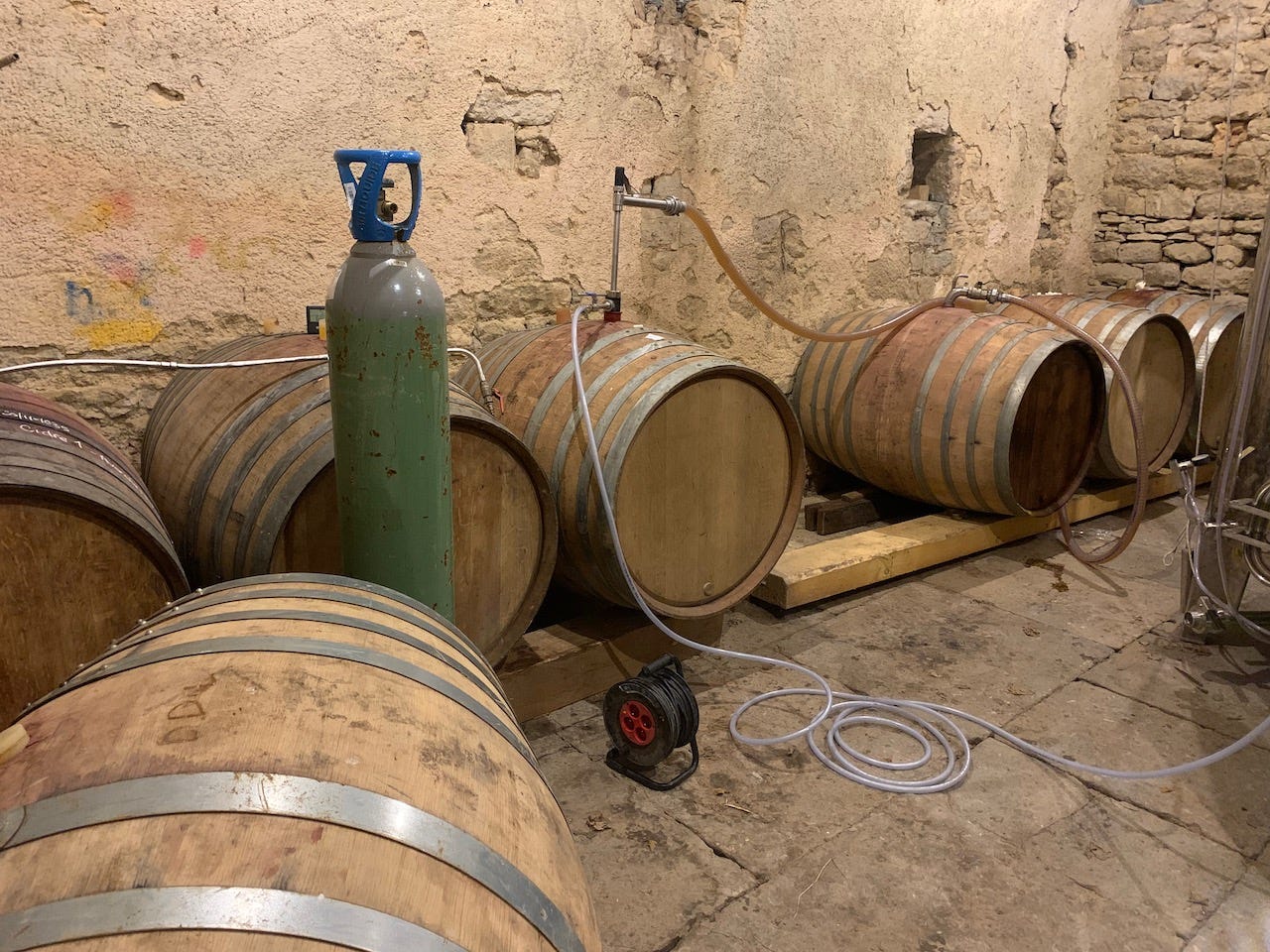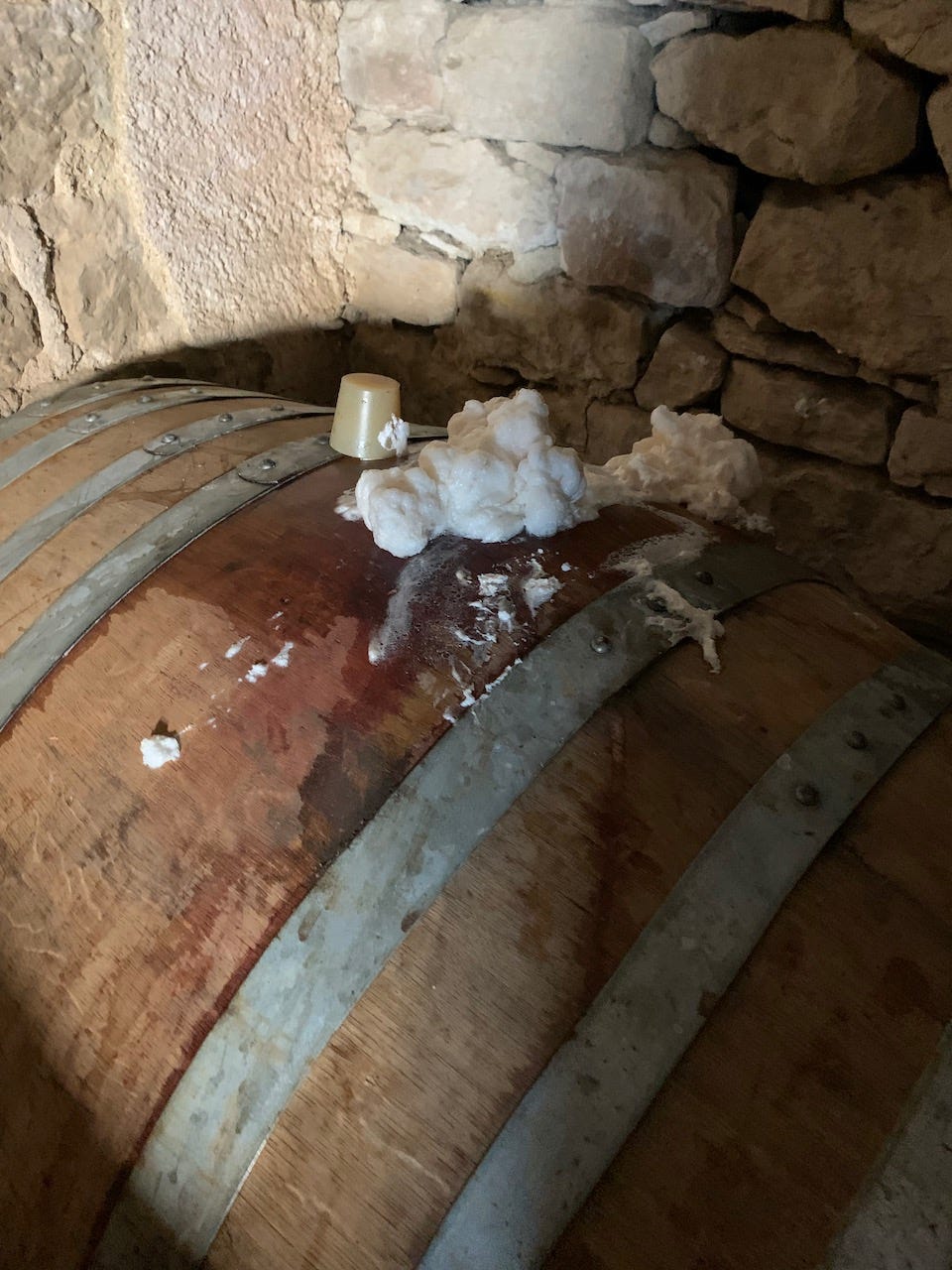Domaine Dandelion Branches Out
Hautes Côtes vigneron Christian Knott on the couple's first cider vintage.
Franco-Australian winemaking couple Morgane Seuillot and Christian Knott founded Domaine Dandelion in Seuillot’s native Mavilly-Mandelot in 2015. The couple’s initial vintages of pinot noir and aligoté (produced, until 2020, in the cellar of their friend Chris Santini) quickly set the natural wine world alight, distinguished by their ambitious, thorough artisanship and by Knott’s manifest Midas touch in vinification. (This year’s harvest will be Knott’s final vintage at his day job as head winemaker at Domaine Chandon de Briailles, where he’s also pioneered a small range of excellent, unsulfited Burgundies.)
Domaine Dandelion comprises just 3.5ha, of which 3ha are presently production, and several recent vintages have seen low yields due to frost, with the result that the estate’s wines soon became famous partly for their rarity. Long disdainful of négociant grape purchases, Knott in 2021 decided instead to expand Dandelion’s offering with the production of cider, produced from apples sourced from independent growers in northern Burgundy.
Curious to learn how Knott would adapt artisanal cider production to his own rigorous standards, I revisited him in mid-June, and was delighted to find that he’d basically done my work for me, having photographed every stage of production. The images seemed worth publishing, along with a few of my own, as a kind of collaborative photo-essay, which Knott kindly agreed to narrate.
Aaron
DOMAINE DANDELION’S FIRST CIDER VINTAGE: A PHOTO ESSAY

CHRISTIAN KNOTT: I’ve always liked to make cider. I’ve made two very small batches before. In Australia, in 2007, I bought some eating-apples and pressed them. Then in 2009 I made a cider from the hill of Corton-Charlemagne. There’s an apple tree in the middle, and we picked some with some friends. It was good, very mineral, quite austere.
So last year I rang up a few organic apple producers and cider producers. And out of the five people we bought from in the end, only one was a professional. The other people were just people who had orchards.
With cider apples, they’re not ripe when they fall from the tree. You need to store them before pressing them. It’s important for flavor and concentration, and density, and, to some extent, alcohol. The apples concentrate, the flavors mature, and the starch transforms to simple sugars.
That’s washing the apples, in a big tub.
We sorted them all into picking cases, and got rid of all the ones that were bruised. You can’t age them.
Then we stacked the cases up so they could still have some air, then heated the room to 17°C. Traditionally they would do it for two months at 5°C. But it’s much quicker at a higher temperature.
You cut the apples and test it with iodine to see how much starch is left. It goes black when it’s still got starch. And it’s clear when there’s no starch left. Then you can press them.
The press cycle takes only about an hour. It’s a small press. We can do about 10HL of juice, in a big day. We don’t use enzymes, which is very common, even in artisanal cider production. [Editor’s note: Pectin enzymes are often employed in cider production to increase juice yield and encourage clarification.]
We put the press on the back of the truck, and lifted it up. That way we were able to do it all by gravity. Out of the press, we didn’t use a pump. It went by gravity into the tank, and then by gravity into the barrels, and then we racked it out of barrels using nitrogen gas. It went into a tank, we left it for a month, and then bottled it by gravity, with a six-spout device.
I know it doesn’t mean much. But I don’t think anyone else in the world makes cider without using a pump. Maybe some home cider makers do it. The guys I was buying apples from, they were making 200-300L of cider, then they’d sell the rest of the apples. But even they had water pumps.
In the northern part of Burgundy, they have more acidic sweet apples, rather than tannic sweet apples, like they have in Normandy. So in style, our cider is a bit more vinous, more like a pet’-nat’ style, rather than a tannic, crunchy, funky style of cider.
All the apples were high acidity apples. I don’t know all the varieties. We got them from five different people, and they’ve all got mixed trees.
There was one old guy who had three trees of the same variety, but he didn’t know what variety. The trees were 80-100 years old. I found those to be the best ones.
When we bottled the cider had 8g of malic acid, which is quite huge, like triple what you’d have in a normal wine, before malolactic fermentation. Now it’s definitely started malo, since it was bottled.
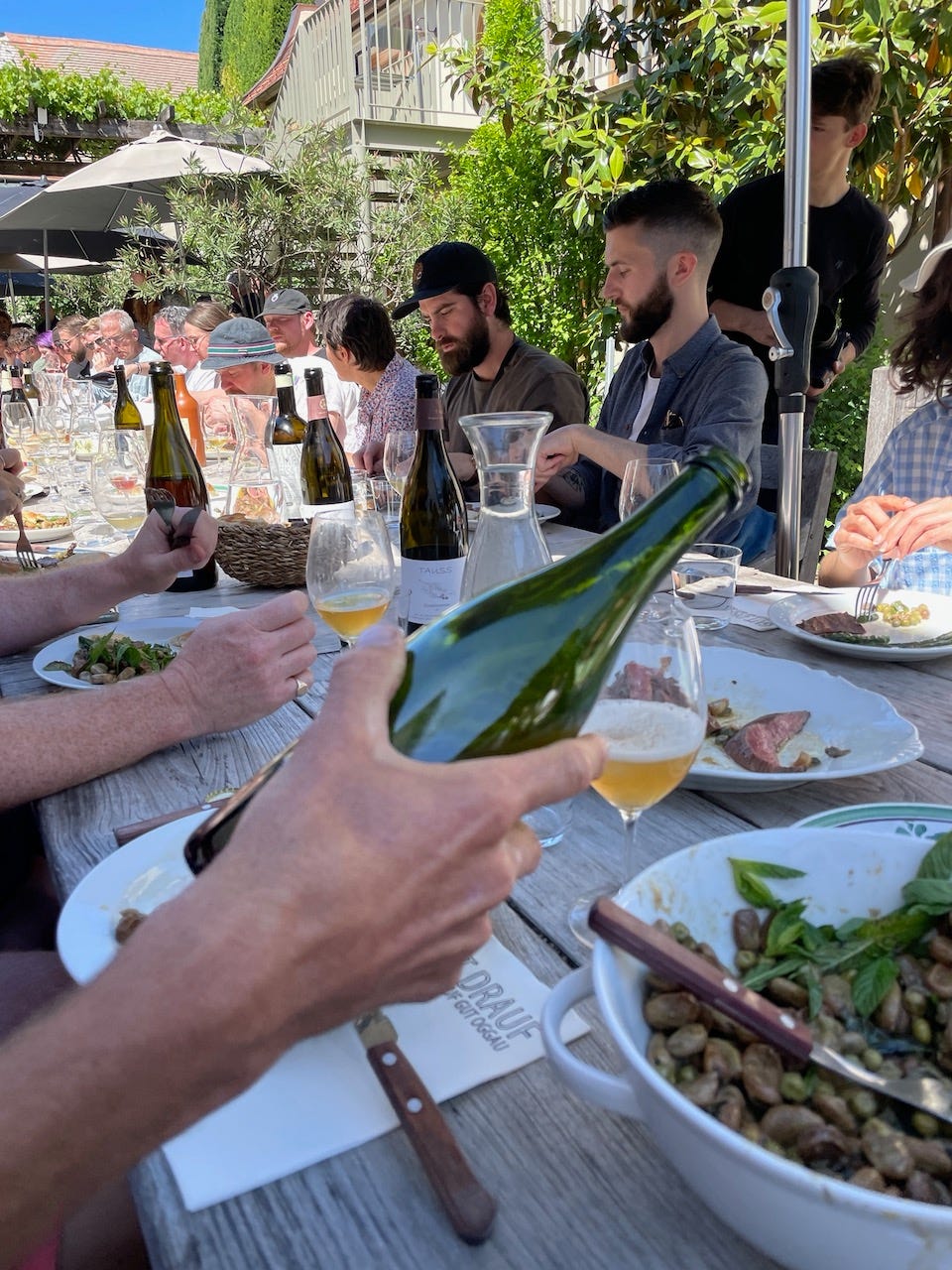
It’s a lot of work. We’re not doing spreadsheets with margins, profits, how much things cost. At the end of the day, when I’m looking at a bottle of cider, I’m not thinking about how much the label costs, how much the bottle costs. I’m thinking about how much do we want to pay for a bottle of cider when we go to a restaurant? That’s how it works for us.
I feel like with cider, you’re making a cheap drink that’s just meant to be drunk. It’s not anything pretentious.

Ideally, at some stage, we won’t buy apples. But that might take another four years. We planted apple trees on a bit of land with flatter, richer soil. For now, I don’t want to buy apples from professional orchards anymore. I’d like to only buy apples from people who have trees.
This year we made 4000 bottles. It was a manageable amount, but if we do more, we’d have to structure it differently. So I don’t think we’ll do more quantity.
I feel like, with the amount we made this year, we could afford to lose it, and it wouldn’t be the end of the world. I don’t want to be in a position where you’ve got pressure, where you have to do it a certain way, where you have no choice… When you go down that direction, you might as well do things the safe way.
FIN
Domaine Dandelion
5 Place de l'Église
21190 MAVILLY-MANDELOT
FURTHER READING
Bert Celce of Wine Terroirs wrote a nice account of our summer 2020 visit to Domaine Dandelion.




